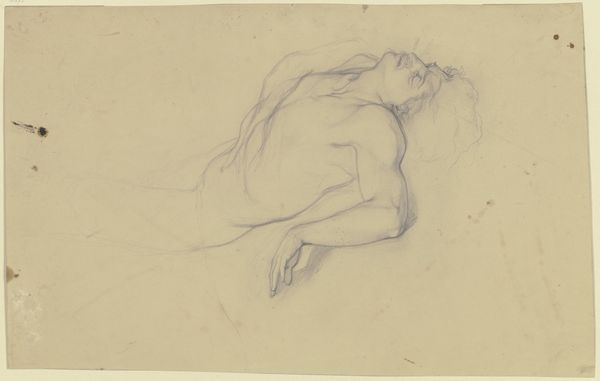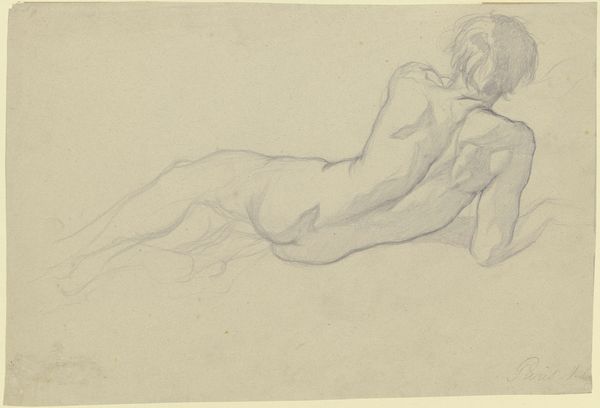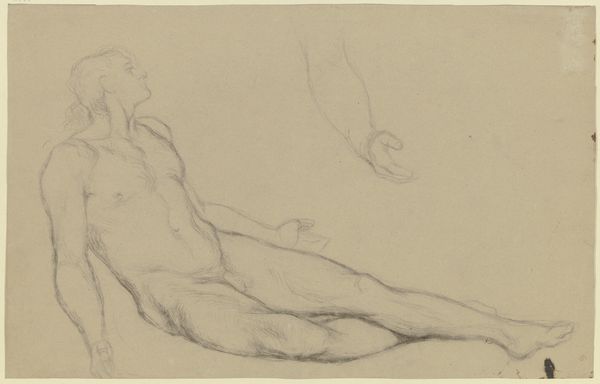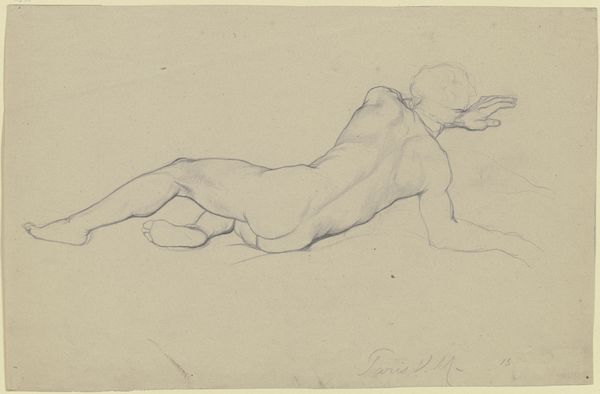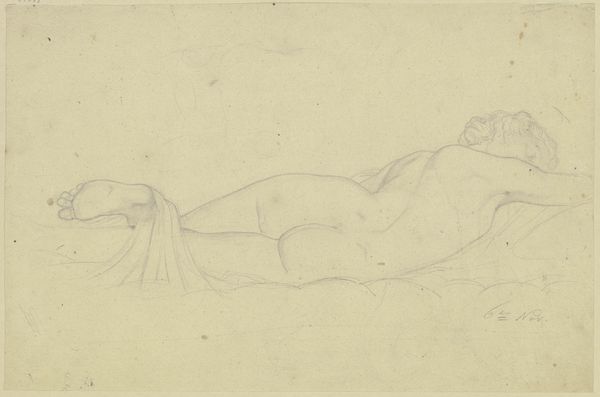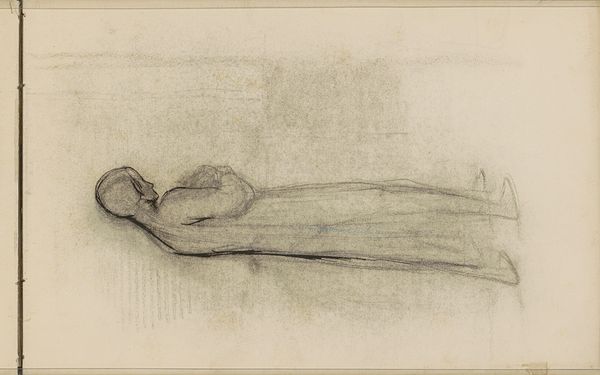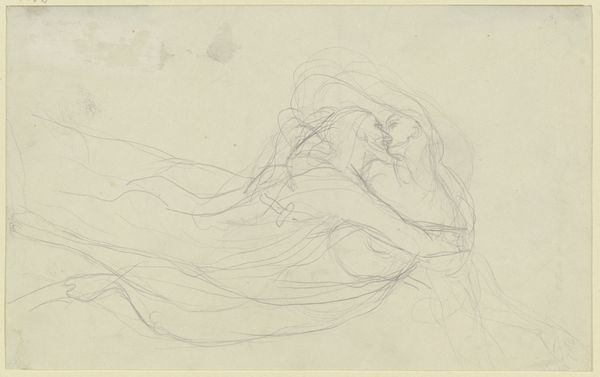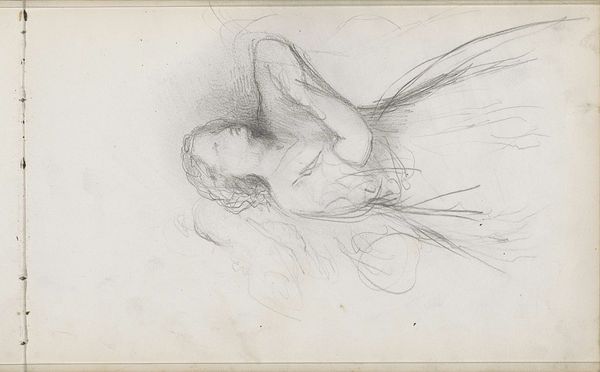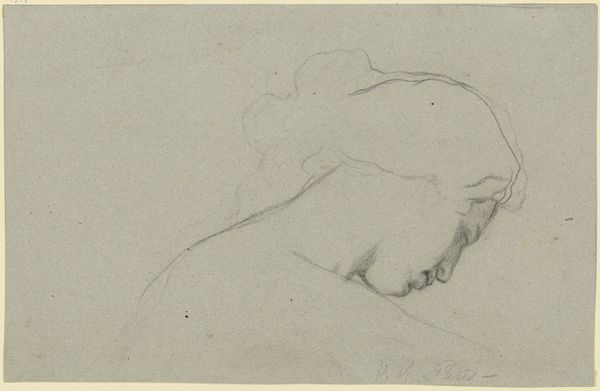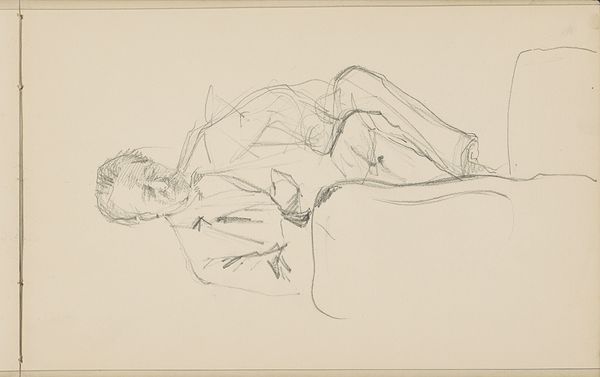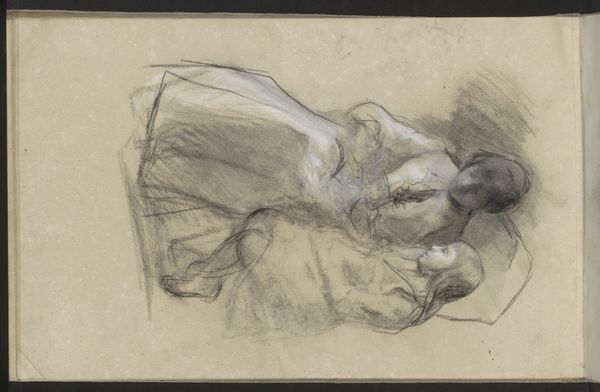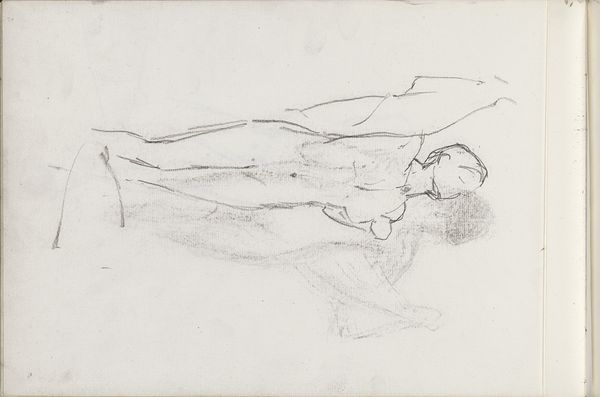
drawing, pencil
#
pencil drawn
#
drawing
#
pencil sketch
#
landscape
#
charcoal drawing
#
figuration
#
pencil drawing
#
pencil
#
portrait drawing
#
academic-art
Copyright: Public Domain
Curator: I find Victor Müller's "Desdemona, killed," a drawing made after 1868, intensely unsettling. It's rendered in pencil, showcasing Desdemona's lifeless form, evoking both tragedy and a certain coldness. Editor: Yes, the drawing feels raw, doesn't it? The pencil work itself is so economical. Look at the very visible process—the swiftness and deliberateness of the marks on paper. I’m curious about the paper itself; its texture adds to the overall feeling of… fragility. Curator: Absolutely. The choice of medium, a simple pencil drawing, speaks volumes. It directs us to confront the harsh realities of domestic violence within the societal structures of the time, specifically examining gendered power dynamics as manifested through a tragic Shakespearean figure. Editor: Exactly. Pencil allows for such subtleties—soft gradations, delicate lines—that serve to underscore Desdemona’s vulnerability. The economic nature of pencil emphasizes production costs. But to circle back, I'd be fascinated to know more about where Müller sourced his paper, given the way paper and pigment interacted at this time. Curator: That’s interesting. Viewing "Desdemona, killed," I consider the role of female representation within the context of Shakespearean tragedies and art of the 19th century. How did Müller consciously engage with prevailing societal beliefs, even unintentionally perpetuate oppressive notions about women's destinies and victimhood? Editor: The very act of drawing invites such repetition. In terms of consumption, viewers over decades view over and over an image that normalizes gendered abuse, yes. But on a simpler level, did Müller, as an artist, want the means to sketch his composition from various vantage points without having to utilize larger formats for study, as material use was precious? The economical approach might have permitted further practice. Curator: Possibly. Viewing this artwork through a contemporary lens allows critical reassessment and challenges previously held assumptions. It allows an analysis into the lasting impact on social discourses surrounding gender, violence, and agency within artistic representations. Editor: Ultimately, analyzing the social history of these pigments and the drawing paper, their sources and costs, would deepen understanding of its creation as a whole. Curator: Indeed, engaging with this artwork fosters reflection and dialogue regarding our societal values, representations of violence, and our ethical responsibilities. Editor: A true testament to art as an object—social and historical. Thank you for sharing!
Comments
No comments
Be the first to comment and join the conversation on the ultimate creative platform.
